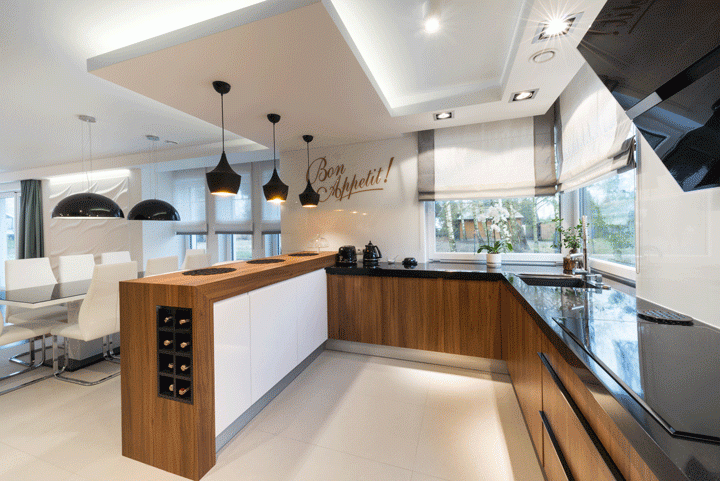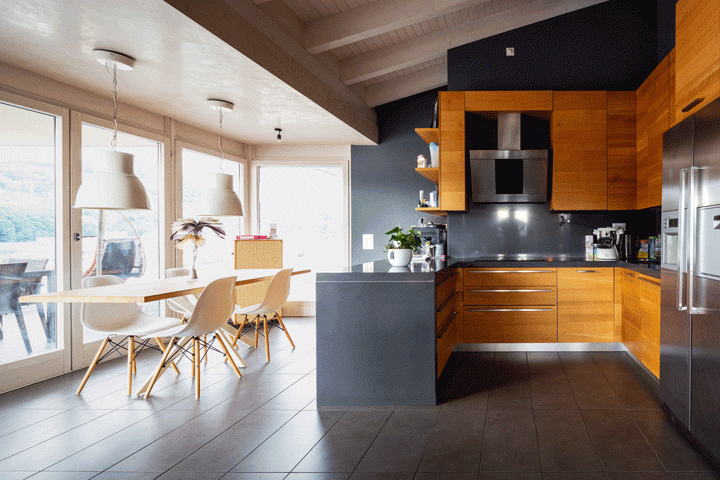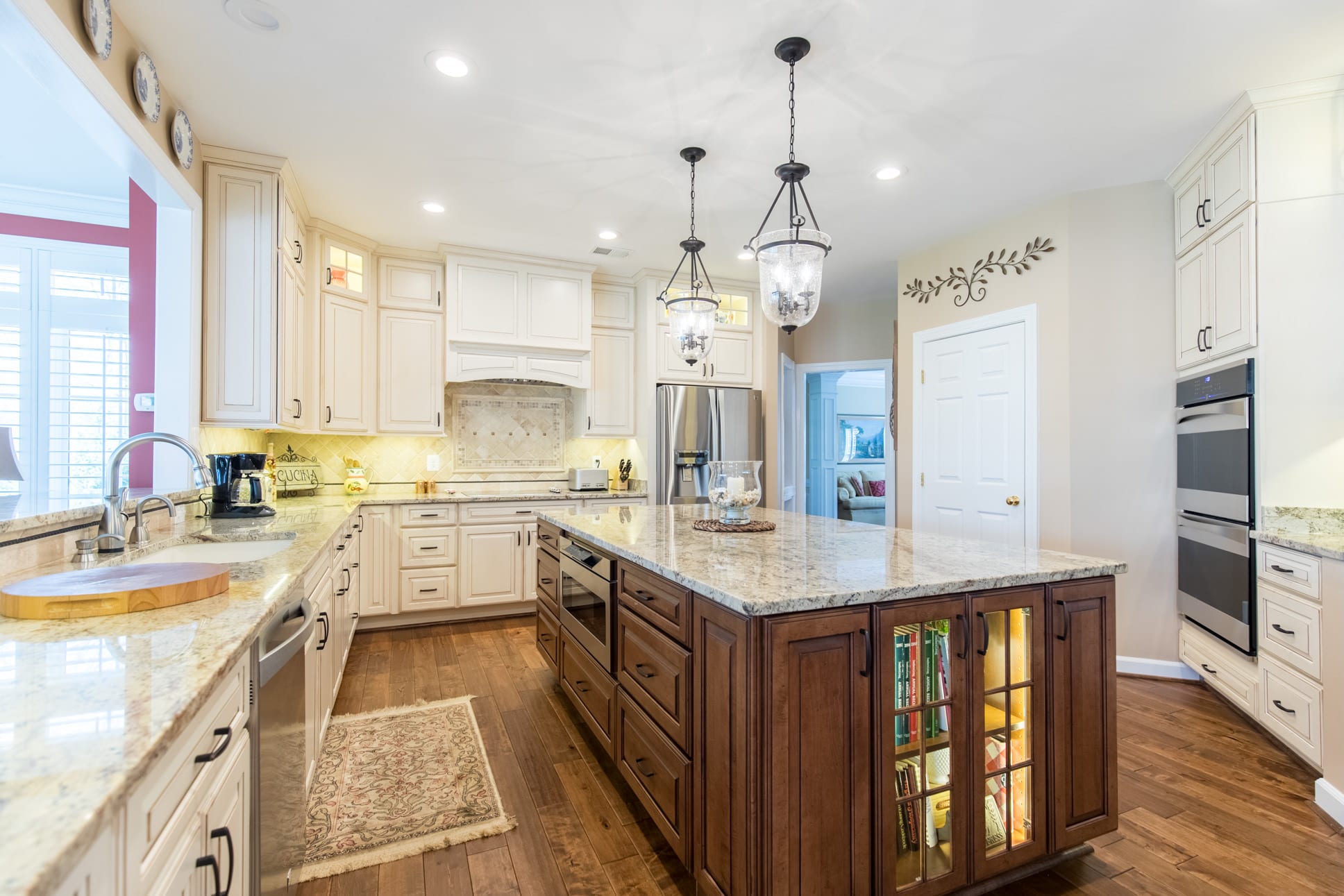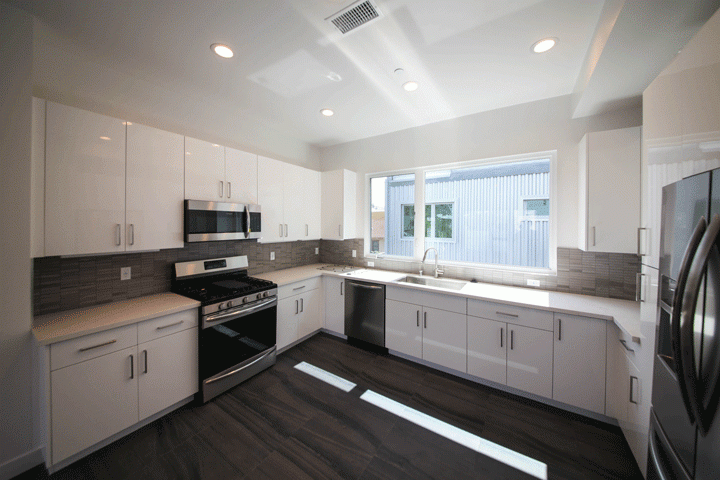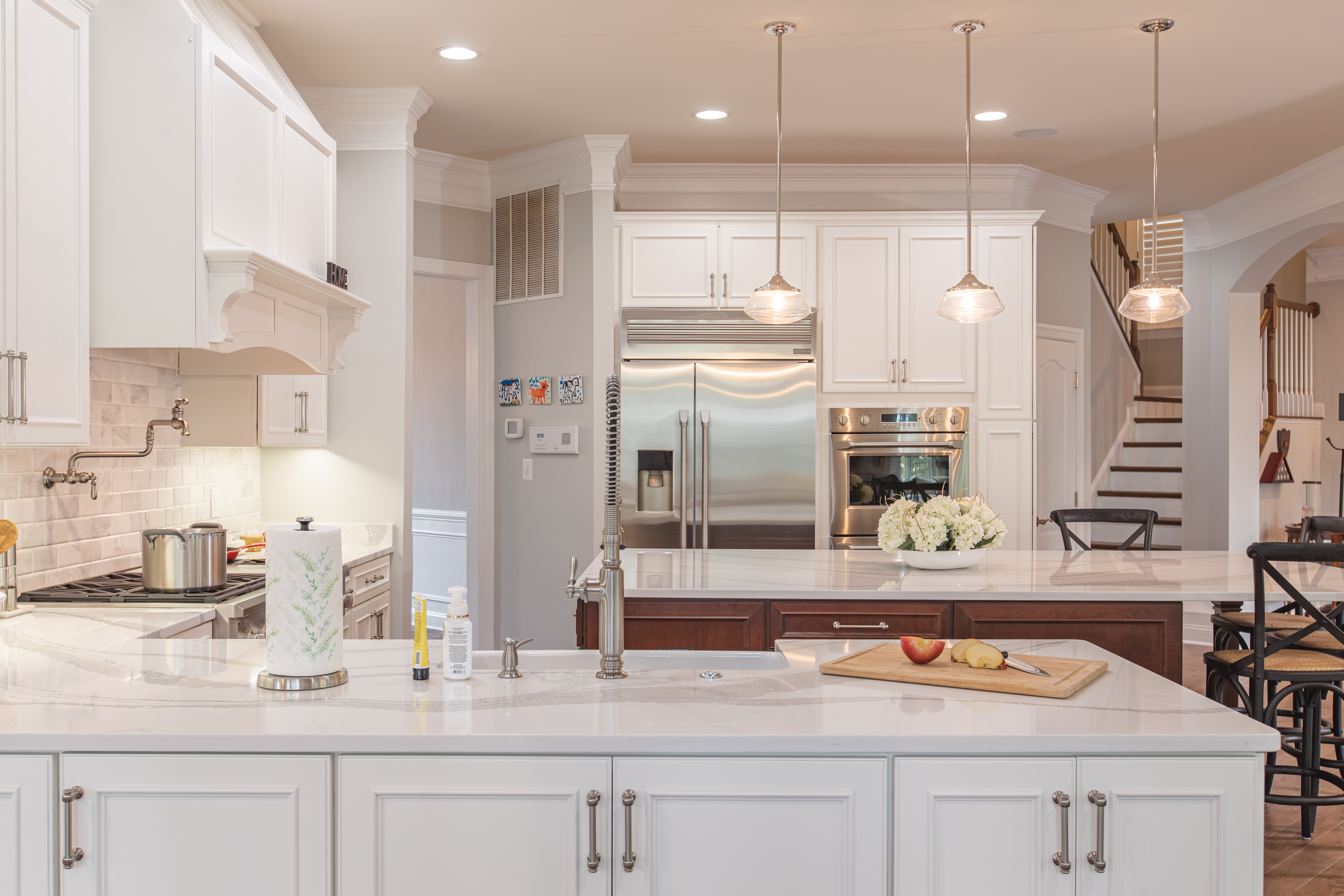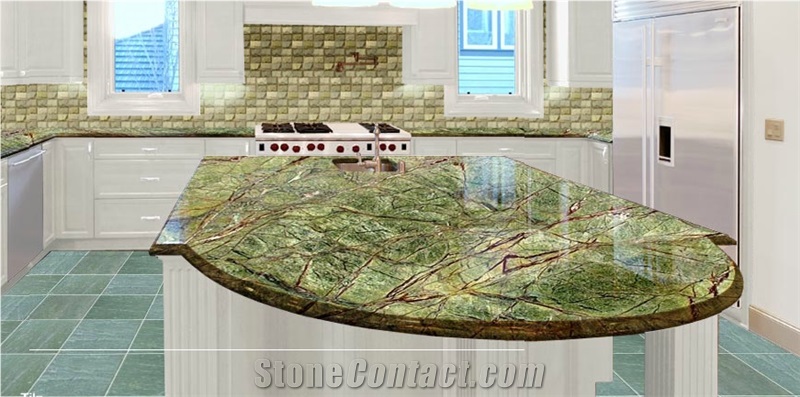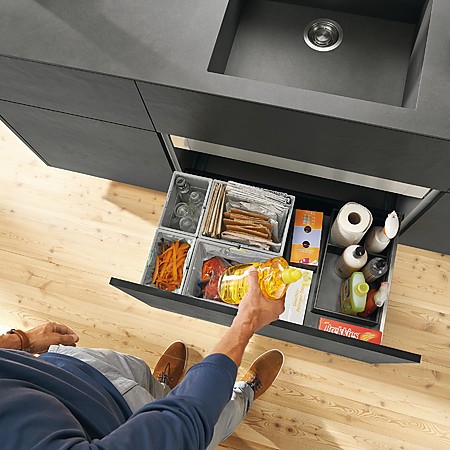
What makes a kitchen with good ergonomics and what should be taken into account when designing a kitchen? In our Blog Posts, we tell you how every fitted kitchen can be planned ergonomically and furnished functionally.
March 17, 2020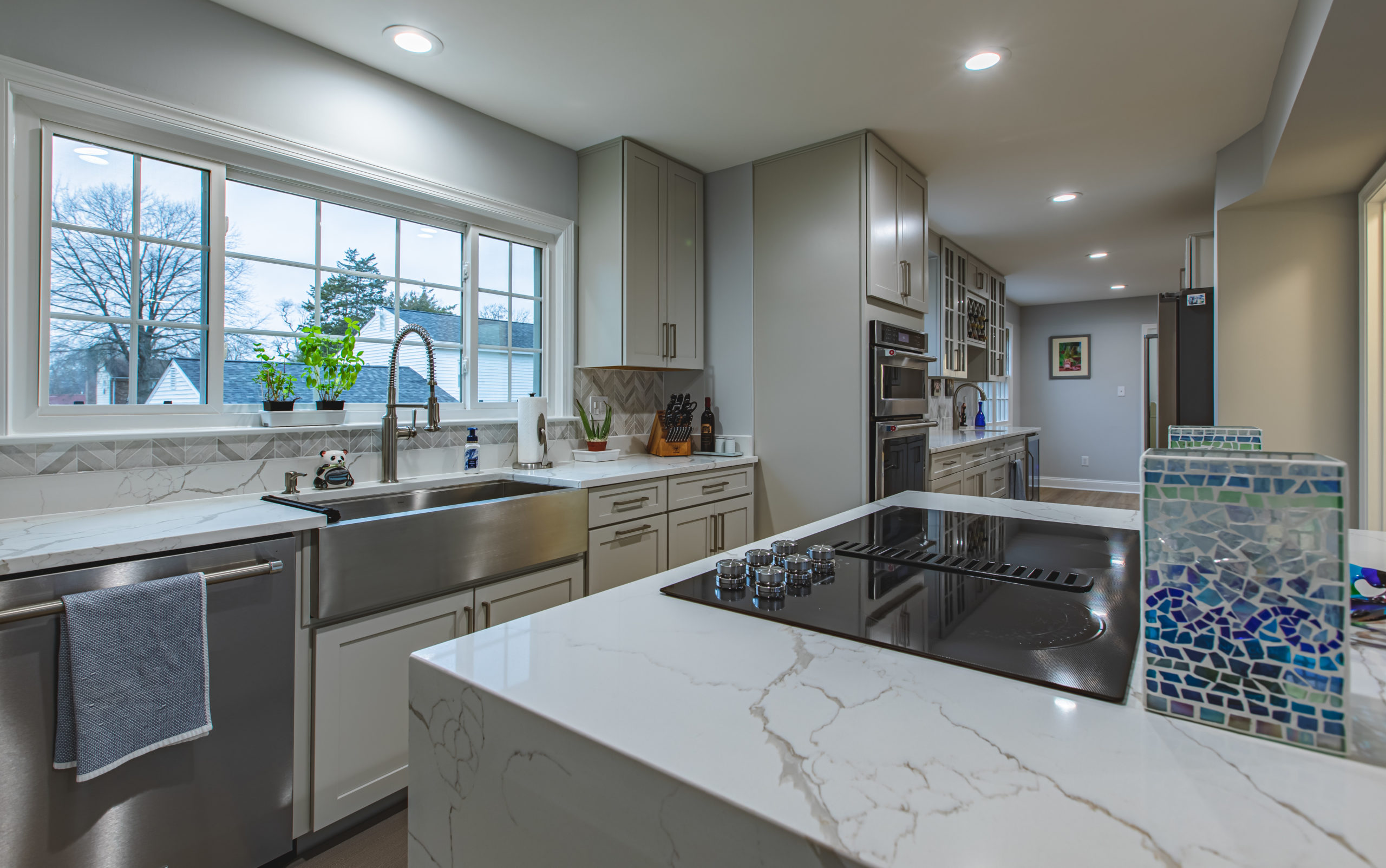
The ideal working height depends on body height and is decisive for the ergonomics of the kitchen. It is determined by the individual elbow height.
April 20, 2020The natural aesthetics and sheer beauty of Granite can be enjoyed from the floor to the ceiling in a bathroom. A few great examples are Granite tub surrounds, Granite shower enclosures, and Granite vanity tops.
The topic of ergonomics is part of today's service standard in kitchen planning. This term is made up of the Greek words ergon (work, work) and nomos (law, rule) and thus describes the science of the laws of human work. Ergonomics is generally concerned with making the work area human-compatible or adapting the furniture anatomically to the human being.
The central aim of ergonomic considerations is therefore always the creation of ideal working conditions for people, and this naturally plays a special role in the kitchen. Work in a kitchen takes up a large part of the weekly working hours in many homes. Here you work every day, and your back is regularly strained. In order to work effectively and save energy, the kitchen should be customized for the most common user!
WHAT SHOULD YOU PAY ATTENTION TO WHEN PLANNING YOUR KITCHEN?
If the kitchen is planned according to ergonomic criteria, the "kitchen user health" can be taken care of. On top of that, routine work processes such as preparing food or dishwashing are simplified, which makes for more efficient work. In addition to the correct body posture, a clear kitchen design also contributes to well-being. If important ergonomic aspects such as the optimum kitchen countertop height are not taken into account during the planning stage, incorrect posture or overloading of the spine can lead to back problems, among other things.
GENERAL ERGONOMIC TIPS TO MAKE KITCHEN WORK EASIER
Change your position more often during kitchen work. For example, when cleaning vegetables or peeling potatoes, briefly put the cutting tool to one side and move, lengthen or stretch. Lack of exercise can cause back or neck problems. Staying in an often inappropriate posture is a one-sided burden.
For longer activities, it is recommended to adopt a sitting position. Cutting work, for example, is much less straining in a seated position than standing. If there is enough space available in the kitchen, a planned seated workplace provides additional comfort.
For highly-planned kitchens, you should always have a small ladder that is safe to step on. This can be stowed away in the plinth or sink base cabinet. In this way, even utensils stored high up are easily accessible.
Image Source: BlumThe central aim of ergonomic considerations is therefore always the creation of ideal working conditions for people, and this naturally plays a special role in the kitchen. Work in a kitchen takes up a large part of the weekly working hours in many homes. Here you work every day, and your back is regularly strained. In order to work effectively and save energy, the kitchen should be customized for the most common user!
WHAT SHOULD YOU PAY ATTENTION TO WHEN PLANNING YOUR KITCHEN?
If the kitchen is planned according to ergonomic criteria, the "kitchen user health" can be taken care of. On top of that, routine work processes such as preparing food or dishwashing are simplified, which makes for more efficient work. In addition to the correct body posture, a clear kitchen design also contributes to well-being. If important ergonomic aspects such as the optimum kitchen countertop height are not taken into account during the planning stage, incorrect posture or overloading of the spine can lead to back problems, among other things.
GENERAL ERGONOMIC TIPS TO MAKE KITCHEN WORK EASIER
Change your position more often during kitchen work. For example, when cleaning vegetables or peeling potatoes, briefly put the cutting tool to one side and move, lengthen or stretch. Lack of exercise can cause back or neck problems. Staying in an often inappropriate posture is a one-sided burden.
For longer activities, it is recommended to adopt a sitting position. Cutting work, for example, is much less straining in a seated position than standing. If there is enough space available in the kitchen, a planned seated workplace provides additional comfort.
For highly-planned kitchens, you should always have a small ladder that is safe to step on. This can be stowed away in the plinth or sink base cabinet. In this way, even utensils stored high up are easily accessible.
Blog Source: kuechen-atlas.de kuechen-atlas.de Premium Granite countertops kitchen wood
